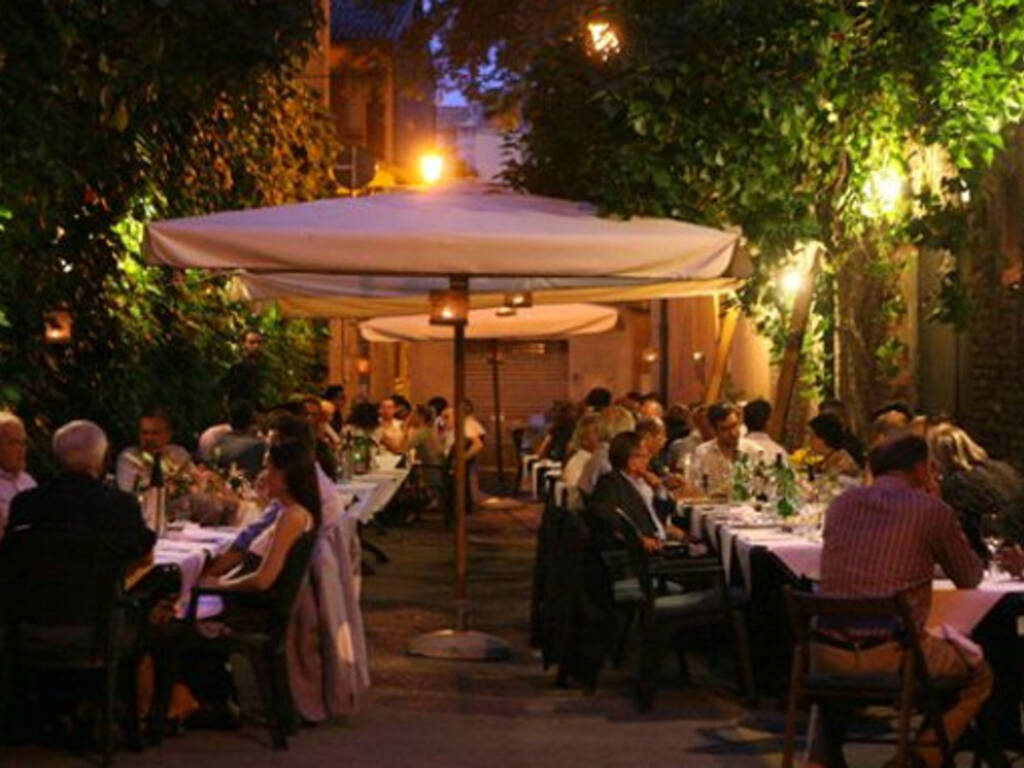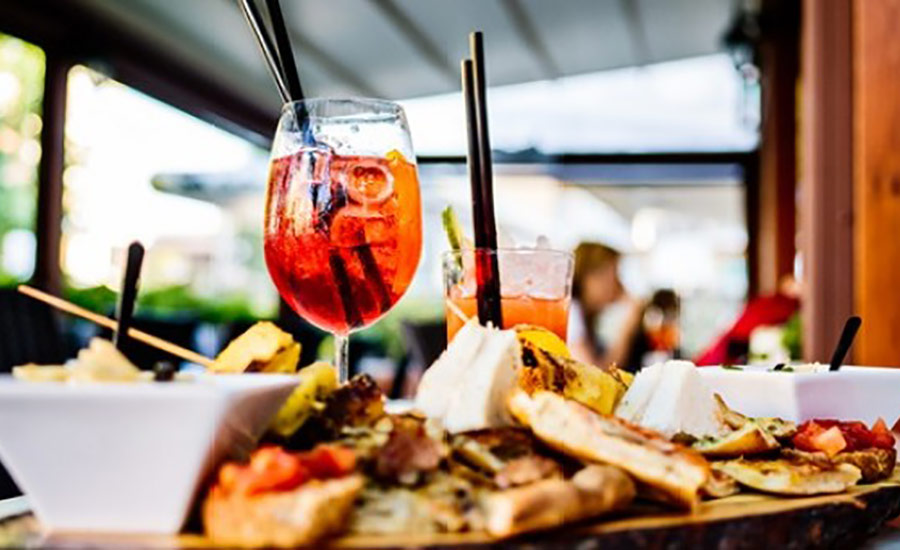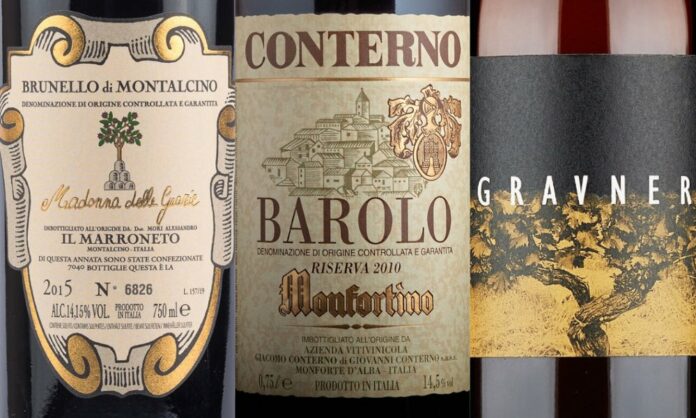Italian Food Etiquette – Rules You Need to Know!
Americans have all sort of rules and laws they follow, such as rules involving queuing (an art technique perfected in Singapore where the queue is king).
By contrast, Italians have very few rules and most of those can be broken. For example, in Italy, there is a minimum drinking age but it’s not really respected. The situation changes entirely when it comes to food. Yes. Italians do have eating rules!
For example, my friend George from New York City once wanted to order a cafe latte with his Mexican meal – right in front of me!!! It took me a while to dissuade him. I hope no restaurant in Italy would ever allow its customers to have cappuccino with pasta! I have never been brave enough to order pasta alle vongole and cappuccino together to test this rule. If you have more courage than I do, try that combination and see what happens.
I just realized that Italy, the place where there are almost no rules (for example on the road where the only rule is you don’t stay in the left lane on an autostrada except to pass), has in fact very strict eating rules.
The following rules are aimed to correct common American (unacceptable!) mistakes…
Lunch / Dinner Order of courses
- Appetizers
- Pasta
- Meat / Fish (with vegetables or salad)
- Salad
- Cheese
- Fruit
- Sweets and coffee
- Ammazzacaffe (Grappa or Amaro)
Breakfast suggestions
Even McDonald’s in Italy serves cappuccino for breakfast. In Italy, forget eggs and bacon or sausages for breakfast, except possibly in a hotel that caters to American or English tastes. Cappuccino and brioche are two of the few ‘legal’ options. Maybe a yogurt. Probably having tea is already pushing it too far…

Lunch and dinner—don’t commit these crimes!
- No butter should be served to spread on your bread (I think it takes away from lunch anyway – I do not serve it when I cook).
- What about dipping bread in oil? There’s no harm with this in the course of a meal, but the bread-oil routine is not used as an appetizer. It has a tendency to fill you up and diminish your enjoyment of the meal.
- No bread should be eaten together with pasta. This is a major no-no. At home here in the US, we make fresh bread when guests come. You know, hot bread is very attractive, but after learning that this is what Barbarians would do, I resolved to serve bread only after pasta is gone from the table. Bread is only allowed near a pasta dish to do a good old-fashioned “scarpetta,” that is, to wipe the sauce off the plate and enjoy every last bit of it.

- Have mineral water and or wine with your meal. Forget sodas or milk unless you are a teenager or small child. Ok, an exception can be made if you are eating pizza at lunchtime, in which case sodas are ok.
- The Italian main meal is traditionally multi-course. Restaurants like to serve you first and second plates and do not appreciate it when Americans insist on having one thing (although they have been getting more used to it in recent times). But keep in mind that Italian portion sizes are smaller than American’s, and the mixture they serve (pasta/rice first, followed by meat/fish/vegetables, followed by fruit) is a relatively healthy balance. You may get fewer calories and a healthier, more balanced meal by eating three courses in Italy, rather than one, giant entrée covered with cheese in the United States.
- Fish-based pastas: traditionally, grated cheese is not added to fish-based meals. These rules have eroded somewhat, but you may still get a strange look if you ask for it.
- Coffee may be drunk with fruit or desert but never with the main meal. In addition, traditional coffees with milk (cappuccinos and lattes) are for breakfast. Lunch and dinner are followed by espressos, or, at most an espresso macchiato (this is a rule that my wife likes to break, but she likes to live dangerously and can talk back in Italian if someone challenges her).
- Contrary to the perception of some, cinnamon does NOT go on cappuccinos or lattes. Chocolate/cocoa or whipped cream does. Go with the flow on this one, you’ll have fun.

-
Never smother pizza with ketchup or mayonnaise. I occasionally succumb to this indulgence (I adore pizza with mayonnaise!). I recognize, however, that seeing someone cover the pizza with mayonnaise is not liked; it is better to avoid it unless you are at home!
-
Pizza containing pineapple or other warped ingredients should not be consumed. It’s become fashionable to test the patience of us Italians when it comes to eating. If you visit Italy, avoid ordering such a pizza at all costs, because you may be booted out (at best!).
- If you are eating at someone’s home, there is still an expectation that you will eat everything on your plate. Again, this has changed somewhat over time, but leaving large amounts of food is still considered an insult to the cook. But watch out for the clean plate problem: cleaning your plate too quickly can cause the home chef to refill it and expect another clean plate. Pace yourself!
- Picking out the healthy food. Italians really object to Americans picking out the healthy vegetables and leaving them on the sides of the plate. Come on – try it! Italians are very good at cooking vegetables and you might actually like it (my young son loves spinach, string beans and other vegetables).
- Salad dressing: Italians use olive oil and vinegar only, so do not expect ranch, thousand island or, worse yet “Italian” salad dressing. Grated parmesan is never used on lettuce.

Spaghetti are untouchable for Italians
- Italians (above 5 years of age) never cut their spaghetti. Well, Italians have been eating spaghetti all their life … they should be able to roll it up on their fork easily. Once upon a time (mainly up to my grandfather’s generation) the use of spoon to roll your fork on was common. However, it is not used anymore – the spoon is definitely out of fashion now.
- NEVER use a knife when eating pasta, if you cut your pasta it then becomes impossible to twirl.
- To eat spaghetti, you only use a fork (only small children use spoons to help them out). And, incidentally, there is no such thing as spaghetti alla bolognese (or bolognaise if you prefer the French spelling), it simply does not exist. You can, however, usually find pasta al ragù, which differs from region to region and, to be honest, from village to village. However, outside of Italy, it’s called bolognese. If you’re looking for the best bolognese sauce to make at home, you can do that! But keep in mind, that in Italy, it’s called ragu!
- Food in Italy is purely about one thing: pleasure. If you really don’t like eating certain foods, tell your host. Italians get far more upset about serving you something you hate than about you telling them you don’t like something.
A quick tip on eating out in Italy for visitors: avoid any restaurant that has an English menu or that has photos on the menu. You will be served inferior or downright poor quality food, at a significantly higher price than average. As a rule of thumb, a pizza Margherita should cost no more than 7 euros, 8 at absolute most. The same goes for coffee bars – the average price of a cappuccino in Milan is Eur 1.40 – The average in Rome is about 1.20 (and you can get a truly excellent cappuccino for that price). Italian eating rules are important here!
Aperitif reminders

-
In Italy, the aperitif never goes out of style. But be cautious about what you consume! The aperitif provides an opportunity to socialize and unwind from work and daily routine. However, like with any dietary issue, we Italians are finicky even when we are relaxed. You must have an Aperol Spritz (Prosecco, Aperol, and Soda – or an Aperol Campari – with Campari instead of Aperol!). Avoid beverages such as Coca-Cola, Sprite, and Fanta.
Wine
Traditionally, white wine goes with fish, red wine goes with meat. White wine is traditionally chilled, red wine (except for sparkling red) should be served at room temperature. I would never do what a friend of mine did: I brought over a bottle of Chianti to her house for dinner. She poured the wine in a pitcher and added ice. The shock lasted a long time.

Keep this guide in mind while in Italy, or if you have to eat with Italians! Traditions are vital here, especially when it comes to cuisine.
































We all have to remember that when traveling, we are in someone else’s home (country). You need to respect any of the local customs as you would expect the same of them if they visited you.
Don’t frown on them because they are different, take it as an opportunity to experience something new and learn from it.
and any interest of ever visiting Italy is now gone. I have way too picky eating from my high functioning autism hypersensitivity and severe OCD and always have to drink Soda with any meal no exceptions. Like I can not eat a meal if there is no soda (and has to be caffeinated) A lot of this has to do with I hate teas and allergic to coffee but have a really bad caffeine dependency! But also cause as I am high functioning I have to have my routines especially around eating. I love Italian foods (even if its likely gonna be the death of me as a diabetic lol) But I could never be capable of following all these strict rules around food. Some wouldn’t phase me since I don’t often eat breakfast anyway but I couldn’t eat a typical Italian breakfast cause too much sugars as a diabetic I have to avoid these. I mean pasta’s is okay even pizza but baked breakfast goods never okay for a diabetic. one other thing would definitely become an issue is their negative issues with us ordering a meal without certain ingredients as I have severe texture sensitivity to many things (what avg. person gets distaste for now imagine that stimulation being 10x worse that’s what i get) Its too bad I will just have to ensure i only visit American style friendly places when I go cause of my food limits and needs being unable to fit their ignorant closed minded expectations if I visit for the art and architecture..
Loved the food in Italy, in all the small villages; Mama was cooking everything fresh in the restaurant kitchen. I even took photos of our food, so-so delicious! Our breakfast cappuccino was perfect at the palace on the hill where we stayed. Our tour guide from the palace was great, she took us to where the olives are sorted, to an opera held in her friends home along with a delicious Italian dinner; and so much more. A very unique and special trip of a life time.
I can second one of these. I went to an Italian pizza place in Paris in the company of an Italian friend. Being Serbian, my language sounds like Italian phonetically (it has the same sort of vowels and consonants even though the words are completely different) and my French accent sounds like I could be Italian. However, after a pizza dinner I ordered a cappuccino. My Italian friend was embarrassed, and told the waiter “She’s not Italian!” with a smile as an excuse for me. Then when the waiter left he told me “no cappuccino after noon”.
These are good rules. It is best not to do in other countries what you do at home. People should read this before you travel.